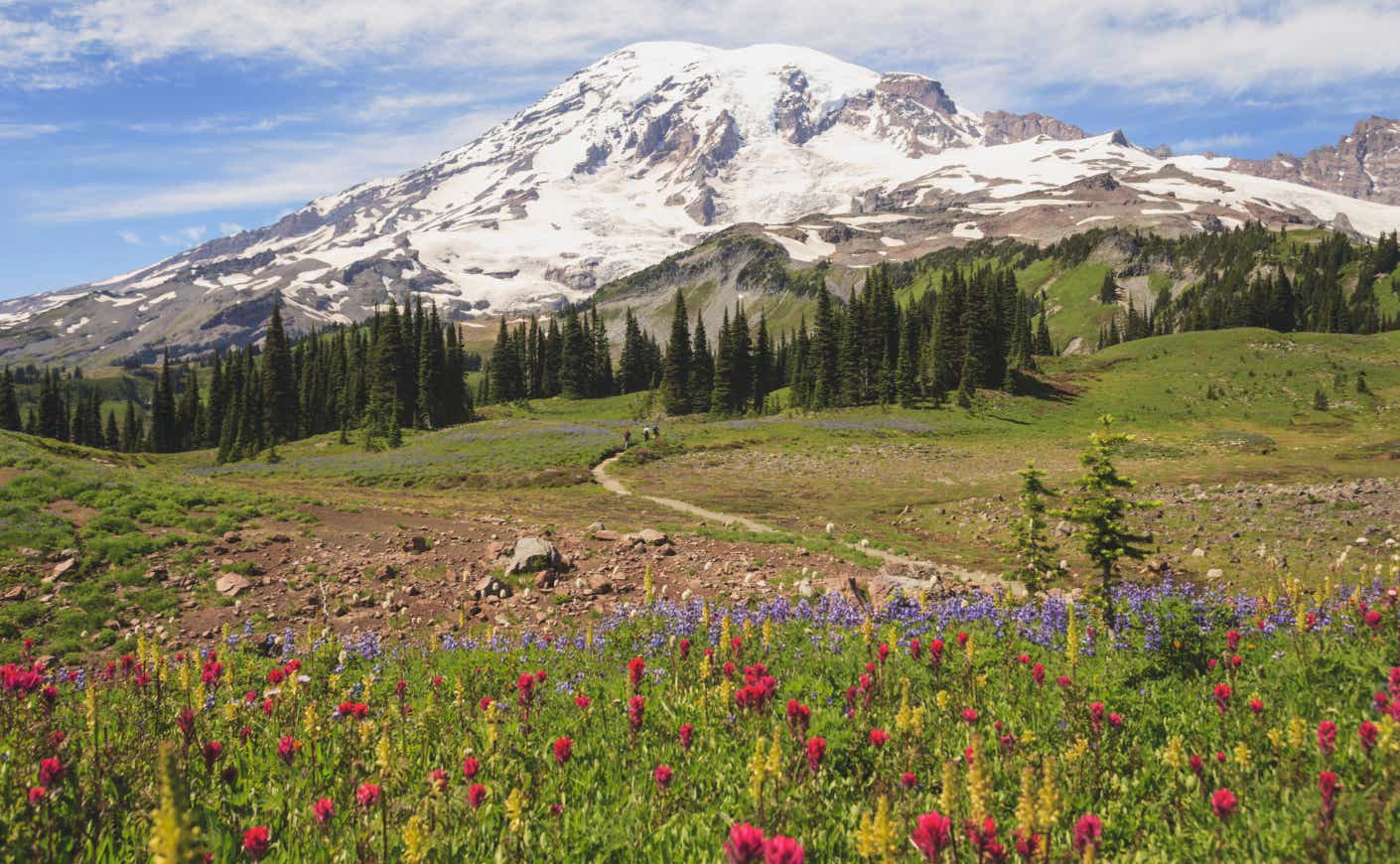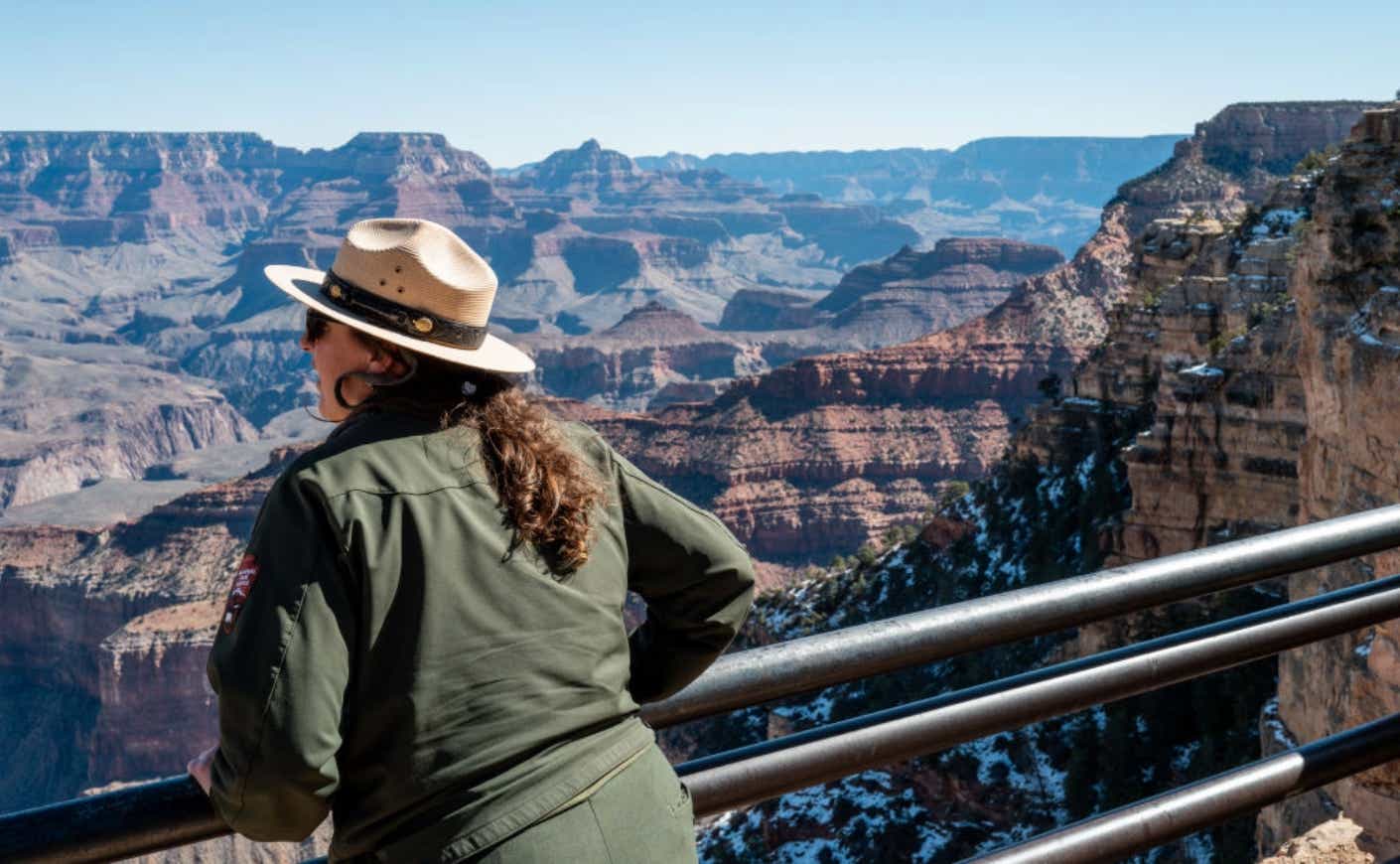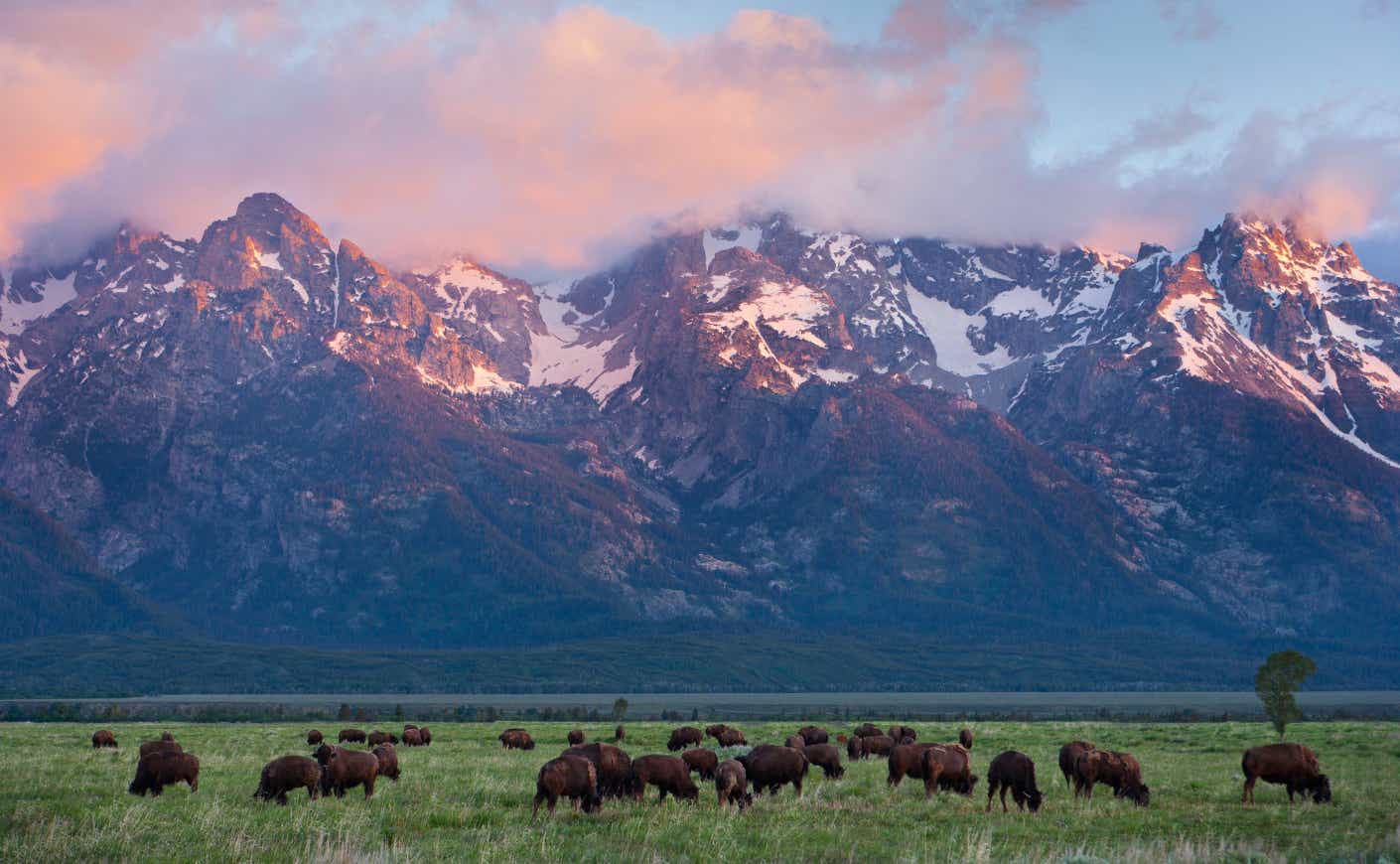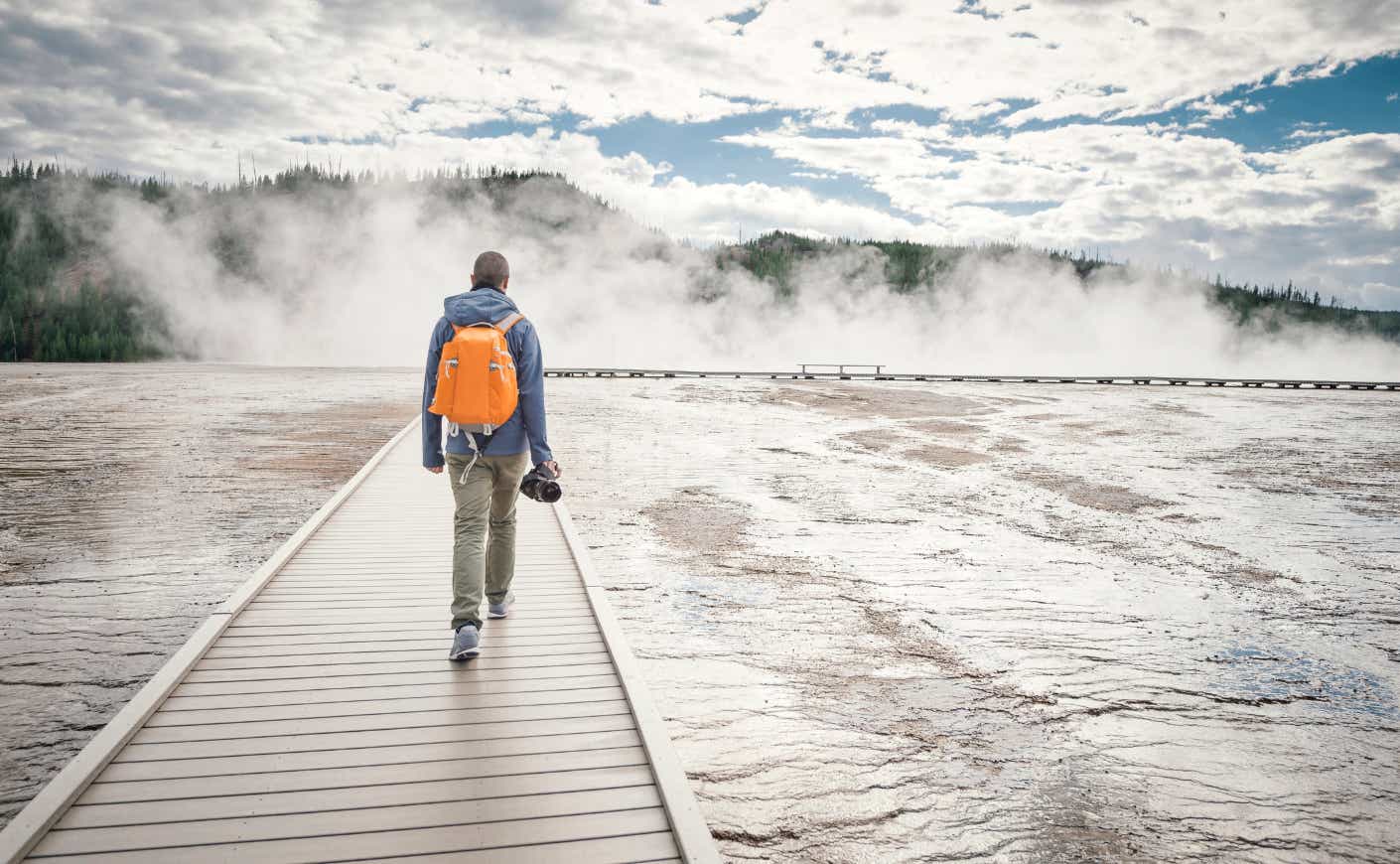Springtime is officially here, and summer’s just around the corner, but chaos is unfolding behind the scenes at the National Park Service — and it’s creating plenty of confusion for workers and visitors alike.
Just weeks before peak season in many of the country’s 63 national parks, the agency abruptly laid off roughly 1,000 employees in February as part of the cost-cutting campaign led by Elon Musk and the Department of Government Efficiency. But in a dramatic turn, two judges recently called out issues with how President Donald Trump handled the mass downsizing. One ruling could even bring back 16,000 probationary employees within the federal workforce — though Trump is already asking the Supreme Court to step in and stop it. When that decision will drop is anyone’s guess, leaving thousands stuck in limbo.
While the rulings could force agencies to rehire fired staff, it doesn’t solve the bigger problem: The Park Service is already underfunded and understaffed, and further cuts could be looming. “There are questions about how many [employees] will actually return,” the Association of National Park Rangers (ANPR) wrote in a news release. “If they moved back to where they were when hired, will they move again? Will they accept reinstatement, knowing they could still be let go?”
Adding to the uncertainty, the Department of the Interior is bracing for a 30 percent payroll cut, with “additional massive layoffs” expected in the coming months. Meanwhile, the Park Service has been ordered to submit a restructuring plan by April, raising fears that even those reinstated today could be out of a job again soon.
The staffing crisis could lead to fewer rangers, longer lines, and reduced services for travelers visiting national parks this spring and beyond. But according to travel groups like Good Trip Adventures, this isn’t a new problem — it’s only making an already complicated system even more challenging to navigate.
“Visiting national parks can be confusing, even in a normal year,” says the group’s chief adventure officer, Megan Kennedy. “Right now, there’s added uncertainty around park staffing and operations. While it’s great that some employees are being reinstated, many visitors, especially international travelers, are still unsure whether parks will be fully open or what to expect when they arrive.”
Here’s what you need to know about the developing situation — and how it might impact your plans.
Why were National Park Service employees fired in the first place?
The since-overturned staff reductions were part of Trump’s broader effort to shrink the federal workforce. These firings specifically targeted probationary workers — those still in their trial phase before gaining full-time status — and, as ANPR executive director Bill Wade points out, those workers “could be serving in any function of the Park Service,” from biologists to fee collectors and maintenance staff. He adds that the only ones spared were rangers responsible for law enforcement, emergency response, and medical duties.
“We’ve heard that Mount Rainier National Park in Washington lost its only plumber,” he tells Katie Couric Media. “So if there’s a water emergency, who handles it? It really depends on the park and which positions happened to be in probationary status at the time.”

Although the Trump administration justified the cuts as a cost-saving measure to eliminate “frivolous expenditures,” the NPS accounts for less than one-fifteenth of one percent of the federal budget. Yet, every dollar invested in the NPS generates a $15 return for the U.S. economy, according to the National Parks Conservation Association (NPCA). And demand keeps climbing — national parks drew more than 331 million visitors last year, even as staffing has shrunk by 20 percent since 2010.
Beyond its economic benefits, the agency is one of the most cherished institutions in the country. A 2024 Pew Research Center poll found it to be the most highly regarded federal agency, boasting a 76 percent favorability rating and strong bipartisan support.
Kristen Brengel, NPCA’s Government Affairs leader, tells Katie Couric Media that the push to downsize the National Park Service is a prime example of “just how reckless and careless this whole DOGE process has been.”
“No agency has been spared from these sweeping cuts — the park service is just another casualty of the same indiscriminate slashing hitting every corner of the federal government,” Brengel explains. “But in the past, there was always an effort to protect our national parks. This time, as DOGE mapped out its plans, there was no one at the table fighting for them.”
How will this impact your visit to national parks?
While federal worker layoffs could affect national parks nationwide, some may feel more impact than others. Brengel notes that larger parks like Yellowstone may have an advantage, as they don’t fully reopen until spring, giving them more time to rehire seasonal staff. On the other hand, parks in Utah, such as Zion National Park, which are already welcoming visitors, could face greater challenges.
“There’s a whole workforce behind the scenes keeping these parks running,” Brengel explains. “When you make hiring harder, fire employees, and even take away essential resources like credit cards, it becomes nearly impossible to perform basic operations. This will cause serious problems.”
The effects are already showing at some of the country’s most visited parks. For example, Grand Canyon National Park has lost several staff members who worked at entrance stations and collected fees. As a result, Wade says visitors might only have one lane open instead of two or three, leading to longer lines and wait times.

Saguaro National Park in Arizona is also scaling back, closing its visitor centers on Mondays until further notice. Yosemite National Park has delayed reservations for five popular campgrounds, affecting trips scheduled for June and July.
Uncertainty is spreading beyond national parks, too. Florissant Fossil Beds National Monument in Colorado announced on Facebook that it will now only be open Wednesday through Sunday, with no access to the visitor center, trailhead parking, or public restrooms.
Friends of Acadia, the nonprofit partner of Maine’s Acadia National Park, says hiring delays and workforce cuts have thrown summer planning into turmoil, leaving uncertainty about staffing levels for the upcoming season.
Some worry that these staffing shortages could lead to more than just inconveniences like empty toilet paper dispensers. As Brengel points out, overflowing trash could create serious problems for both visitors and wildlife.
“We saw this during the government shutdown a few years ago — when trash piles up, it becomes a nightmare for wildlife,” Brengel explains. “Animals get drawn to areas where people are, and that puts them in dangerous situations. All the work the park service does to keep wildlife away from high-traffic areas goes out the window when garbage starts piling up.”
Should you cancel your national park plans?
All of the experts we spoke to agreed that you shouldn’t cancel your park plans, but they did advise taking extra precautions.
“I would never want to discourage anyone from visiting national parks — they’re incredible, and for many, it’s a once-in-a-lifetime trip. But this year, safety is more important than ever,” says Brengel. “Check the weather in advance, choose trails that are appropriate for you and your family, and dress for shifting temperatures. And most importantly, bring plenty of water — whatever amount you think you’ll need, double it. We’re not saying don’t go; we’re just saying that thorough planning is essential.”

Navigating the complexities of national parks can be overwhelming, but teaming up with a travel group or local guide can make all the difference. “The uncertainty around visiting national parks can make planning difficult, but that’s exactly what we specialize in — helping people navigate these systems,” says Kennedy, who focuses on Yellowstone and the Grand Tetons. “Local guides, especially those who live and work in these areas, can be an invaluable resource for travelers unsure about their trip.”
While the current instability is undoubtedly affecting jobs and livelihoods, Kennedy sees a potential silver lining: It could inspire travelers to explore lesser-visited, often-overlooked national parks.
“The feedback I get from clients is that while they enjoy visiting the famous spots they’ve heard about for years, those rarely end up being their favorites — maybe because the expectations are so high,” says Kennedy. “But when they explore something a little more off the beaten path, it feels more special, and they often have it more to themselves. National parks are vast, with so much more to see beyond the well-known landmarks. Getting creative with your itinerary can lead to some of the most memorable experiences.”









